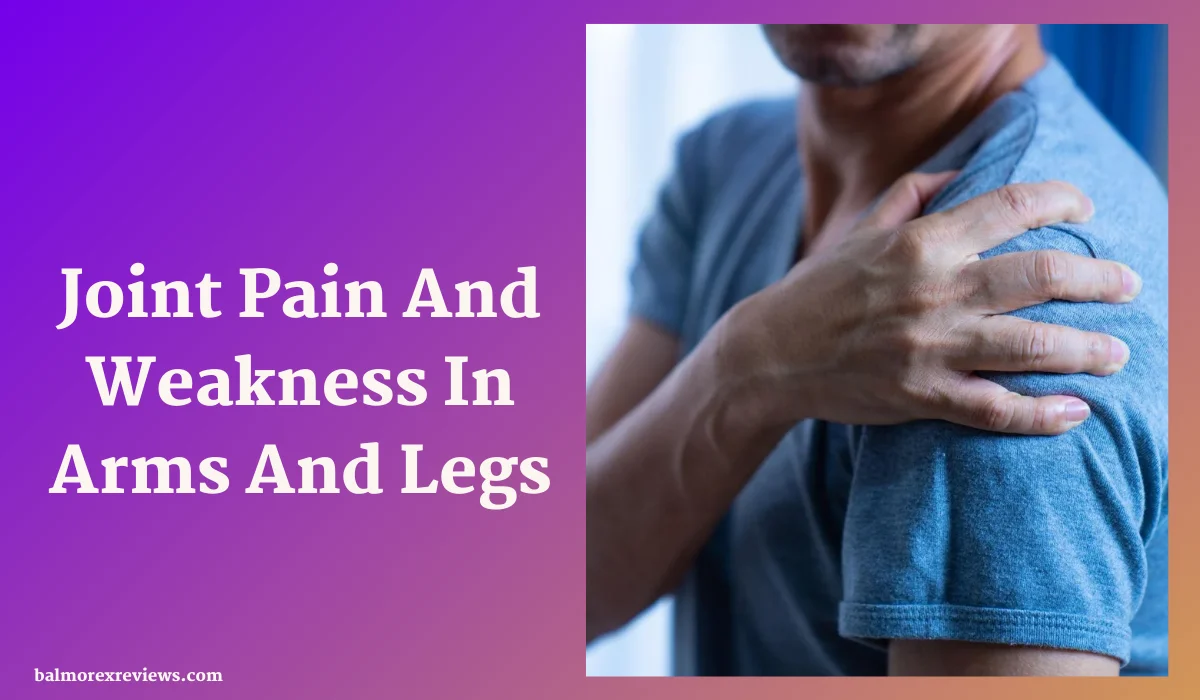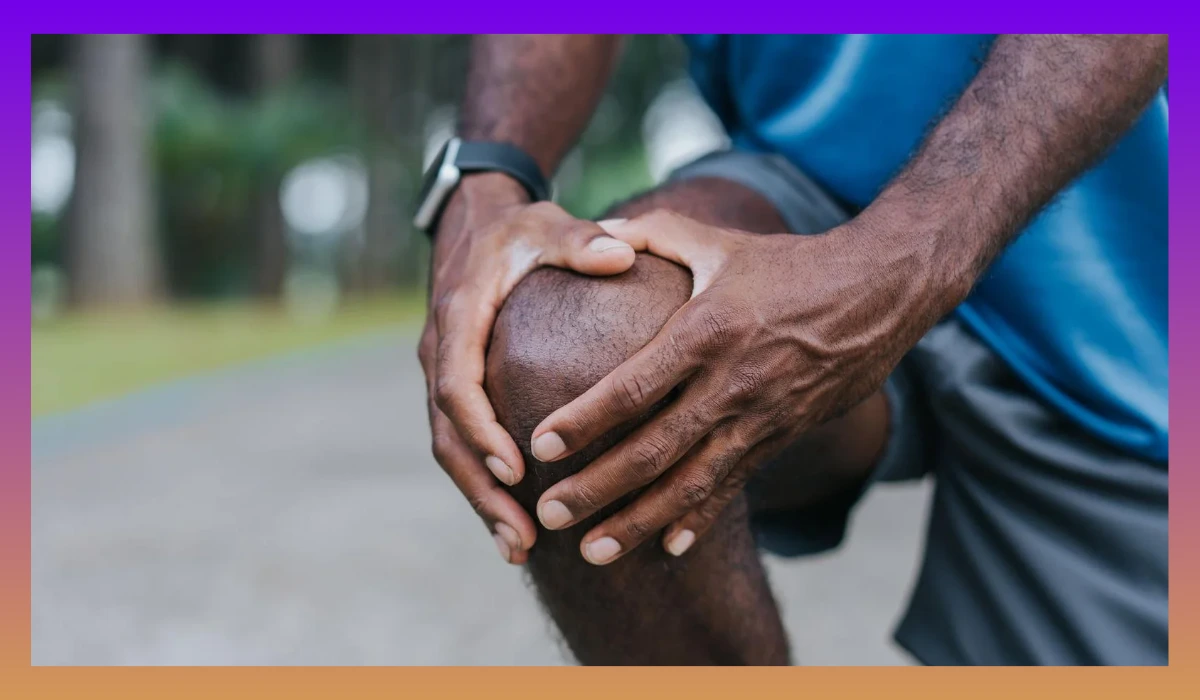Joint Pain And Weakness In Arms And Legs: Causes, Symptoms, And Treatments
Experiencing joint pain and weakness in your arms and legs can significantly impact your daily life, making simple tasks challenging and affecting your overall mobility. These issues can arise due to various factors, ranging from injuries to underlying medical conditions. Understanding the root causes, recognizing the symptoms, and exploring available treatment options are crucial steps…

Disclaimer: This article has been generated with the assistance of AI tools. While our research team has fact-checked the content, readers should independently verify information for accuracy and reliability.
Experiencing joint pain and weakness in your arms and legs can significantly impact your daily life, making simple tasks challenging and affecting your overall mobility. These issues can arise due to various factors, ranging from injuries to underlying medical conditions. Understanding the root causes, recognizing the symptoms, and exploring available treatment options are crucial steps in managing joint pain and weakness effectively. In this article, we delve into the intricacies of these debilitating conditions, shedding light on what may be causing them and how to alleviate the discomfort and regain strength.
Understanding Joint Pain And Weakness

Joints are the intricate structures that connect bones, allowing for a range of movements and enabling us to perform daily activities with ease. When these joints become compromised, it can lead to pain and weakness in the affected areas, primarily the arms and legs. Joint pain can manifest as dull aches, sharp pains, or throbbing sensations, while weakness may present as difficulty lifting objects, climbing stairs, or standing for extended periods.
The impact of joint pain and weakness on daily life cannot be overstated. Simple tasks like dressing, grooming, or carrying groceries can become arduous challenges, significantly diminishing one’s quality of life. Moreover, these conditions can hinder mobility, limiting independence and social interactions. Early recognition and intervention are crucial to prevent further deterioration and maintain an active lifestyle.
Common Causes Of Joint Pain And Weakness
Joint pain and weakness can stem from various underlying causes, each requiring tailored treatment approaches. Here are some of the most common culprits:
- Arthritis: This umbrella term encompasses different types of joint disorders, such as osteoarthritis, rheumatoid arthritis, and psoriatic arthritis. Arthritis can cause inflammation, joint damage, and subsequent pain and weakness.
- Injury: Fractures, sprains, or other traumatic injuries to the joints can lead to long-lasting pain and weakness, even after the initial injury has healed.
- Overuse: Repetitive movements or overexertion can strain the joints, leading to discomfort and weakness over time. This is particularly common in athletes or individuals with physically demanding occupations.
- Other Medical Conditions: Certain systemic diseases like fibromyalgia, lupus, or Lyme disease can manifest with joint pain and weakness as part of their symptom profile.
Recognizing Symptoms
Identifying the symptoms of joint pain and weakness is crucial for seeking prompt medical attention and initiating appropriate treatment. Here are some common signs to watch for:
- Pain: Joint pain can range from mild discomfort to severe, debilitating pain. It may be localized or widespread, affecting multiple joints.
- Weakness: Weakness in the arms and legs can make it difficult to perform everyday tasks that require strength and endurance, such as carrying heavy objects or climbing stairs.
- Stiffness: Joint stiffness, especially after periods of rest or inactivity, is a common symptom accompanying joint pain and weakness.
- Swelling: Inflammation around the affected joints can cause visible swelling, indicating an underlying issue that requires medical attention.
Diagnosis And Treatment Options
If you are experiencing persistent joint pain and weakness, it is essential to consult a healthcare professional for a proper diagnosis. This may involve a thorough physical examination, imaging tests (such as X-rays or MRI scans), and blood work to identify the underlying cause.
Treatment options for joint pain and weakness vary depending on the severity and underlying cause. Here are some common approaches:
- Medications: Nonsteroidal anti-inflammatory drugs (NSAIDs) and corticosteroids can help reduce inflammation and alleviate pain. For autoimmune conditions like rheumatoid arthritis, disease-modifying antirheumatic drugs (DMARDs) may be prescribed to slow disease progression.
- Physical Therapy: Working with a physical therapist can help strengthen the muscles surrounding the affected joints, improve flexibility, and reduce pain through targeted exercises and stretches.
- Lifestyle Modifications: Making lifestyle changes, such as maintaining a healthy weight, engaging in low-impact exercises, and practicing joint-friendly activities, can significantly improve joint health and reduce strain.
- Surgical Interventions: In severe cases where conservative treatments fail to provide relief, surgical options like joint replacement surgery may be considered to restore mobility and alleviate chronic pain.
Coping Strategies And Self-Care Tips
Living with chronic joint pain and weakness can be physically and emotionally challenging. However, incorporating self-care practices and coping strategies can help manage these conditions more effectively:
- Self-Care Practices: Maintaining a balanced diet rich in anti-inflammatory foods, getting adequate rest, and managing stress through relaxation techniques can contribute to overall well-being and potentially reduce joint pain and weakness.
- Supportive Aids: Utilizing supportive aids like braces, splints, or assistive devices can help reduce strain on the affected joints and improve mobility.
- Low-Impact Exercises: Engaging in low-impact exercises like swimming, cycling, or yoga can improve joint function, strengthen supporting muscles, and promote overall physical and mental well-being.
- Emotional Support: Seeking emotional support from friends, family, or support groups can provide a valuable outlet for coping with the challenges of living with chronic joint pain and weakness.
Conclusion
Joint pain and weakness in the arms and legs can significantly impact one’s quality of life, but with proper understanding and management, it is possible to alleviate these symptoms and regain mobility. By recognizing the underlying causes, acknowledging the symptoms, and exploring available treatment options, individuals can take proactive steps toward improving their joint health and overall well-being.
Remember, seeking professional medical advice and adopting healthy lifestyle habits are essential components of managing joint pain and weakness effectively. With the right approach, it is possible to reclaim an active and fulfilling life, free from the constraints of joint-related discomfort and weakness.
FAQs
Several diseases can cause muscle weakness and joint pain, including rheumatoid arthritis, lupus, fibromyalgia, and polymyalgia rheumatica.
Lupus muscle pain can vary in intensity and location, ranging from dull aches to severe, debilitating pain. It may be widespread or localized in specific muscle groups.
Arthritis, particularly rheumatoid arthritis and osteoarthritis, often begins with joint pain as one of the earliest symptoms.
Joint pain can be associated with various nutritional deficiencies, such as a lack of vitamin D, calcium, omega-3 fatty acids, or certain antioxidants like vitamins C and E.
Natalie Smith
Natalie Smith is a highly respected Osteopath with over 15 years of experience in treating a wide range of musculoskeletal conditions. She graduated from the British School of Osteopathy with a Master’s degree in Osteopathic Medicine and is a registered member of the General Osteopathic Council. Natalie’s expertise spans the diagnosis and treatment of issues affecting the muscles, bones, joints, and connective tissues. She utilizes a holistic, patient-centered approach, combining manual techniques such as spinal manipulation, soft tissue massage, and joint mobilization to alleviate pain and restore optimal function. Passionate about educating her patients, Natalie frequently speaks at local health workshops and has authored articles on osteopathic care for several respected medical journals. Her commitment to ongoing professional development ensures she remains at the forefront of the latest advancements in the field of osteopathy.
